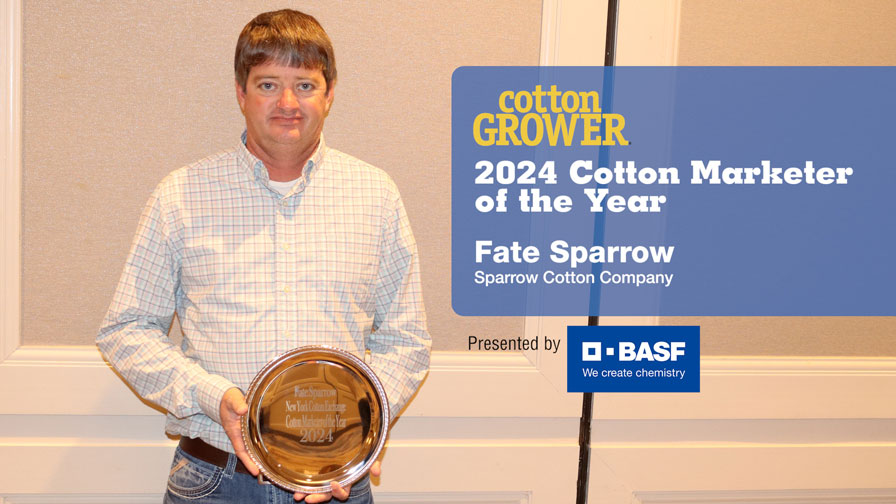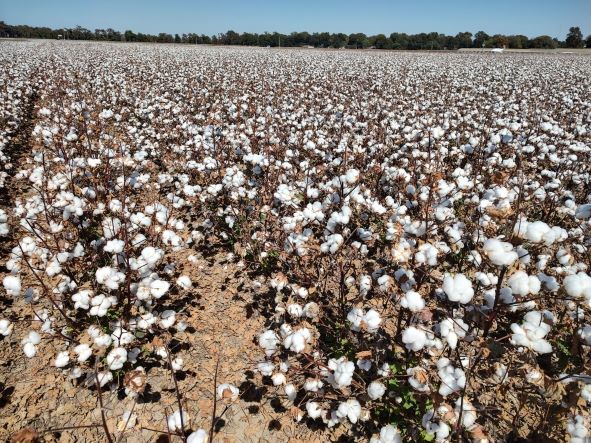Crop Scan Ag Report: Cotton in Bloom, Some Beneficial Rains, Insect Watch
Cotton is blooming everywhere, with some beneficial rains helping dryland acres and giving some irrigation systems a breather. But a bit more moisture from Mother Nature would certainly be welcome. As is common for this time of the season, the focus shifts to insect and plant growth management as cotton greens up.
Here’s what our contributing consultants had to report for late July.
Chad Harrell owns and operates Harrell Agronomic Services in Northeastern North Carolina.
Since the last update, cotton in our area has really turned a corner. All areas received much needed rainfall last week, and we are expecting more to come this week. Our earliest planted cotton received rain just in time before blooming out the top and is now approaching the fourth week of bloom.
Most fields are now growing vegetative and need PGRs since the rain. Lygus pressure has increased over the past week with many fields exceeding threshold. Now that we have good moisture, we still have decent yield potential in most areas.
Wes Briggs consults on cotton, corn, peanuts, soybeans, and small grains for growers in Georgia, Alabama, and Florida.
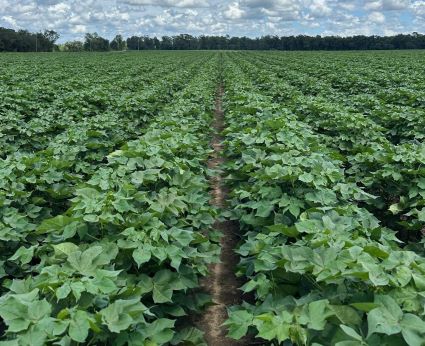 Photo: Wes Briggs
Photo: Wes Briggs
We have cotton anywhere from third week of bloom in our older cotton to matchhead squares in younger cotton, with some dryland fields that might have some cracked bolls in about 10 days.
We’re seeing a mixture of everything in cotton right now. We’ve sprayed more spider mites this year than I’ve ever sprayed, with multiple fields getting two treatments. We just had some pretty big egg lays hatching out after the sprays. But we’ve cleaned them up pretty good.
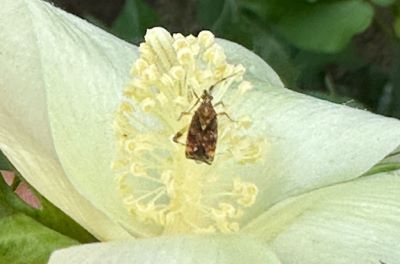 Clouded plant bug (W. Briggs)
Clouded plant bug (W. Briggs)
Plant bugs have been spotty but have not really been bad. We’ve sprayed where we needed to. Right now, we’re seeing some clouded plant bugs moving into cotton. Nothing heavy. Fruit retention is still good. We’re also seeing a little tick up in whiteflies, certainly more than we saw last week, but they’re still really light. That’s how they start. They can blow up on you pretty quick.
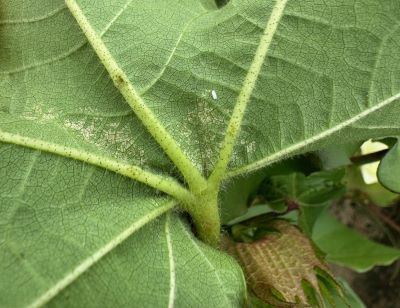 Whitefly and spider mites (W. Briggs)
Whitefly and spider mites (W. Briggs)
Right now, we’re spraying cotton for stinkbugs, plant bugs, and spider mites, putting out a lot of PGR, and still fertilizing a lot of these sandy fields through the pivot.
We’re fixing to start up another moth flight. Our last flight was on June 30, and we are just cleaning up worms in peanuts and soybeans. We treated corn earworms, bollworms, and budworms, then moved into beet armyworms. Beet armyworms have been a challenge this year, and we’re mostly having to treat them with Intrepid Edge.
I’m seeing some new moths today. Nothing too heavy, but we’ll be going another round with worms in about 7-8 days. So far, we’re not finding any worms in cotton. We just have a mixture of multiple pests, and a lot of fields are sub threshold. When you have multiple pests at sub threshold, at some point in time you have to pull the trigger and clean them up, and we’ll do that when we put out PGRs.
I’m getting concerned about target spot in cotton. To date, I don’t know of any fields where we have a bad problem, but it can become a real issue pretty quick with the heat and humidity we have and some of these afternoon showers. Just about everywhere I work has caught some rainfall in the last seven days.
We still have a long way to go. In general, cotton today on July 22 does not look as good as cotton did on July 22 last year. But it’s nothing that we can’t fix here in south Georgia with a little fertilizer and a little tender loving care.
Tucker Miller is a Mississippi-based independent private consultant for cotton, soybeans, corn, peanuts, rice, and vegetables.
All of our cotton is blooming now. The youngest we have, which was replanted due to hail taking out the first planting, just started to bloom this past week.
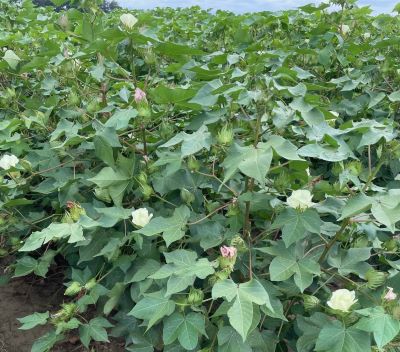 Irrigated cotton (T. Miller)
Irrigated cotton (T. Miller)
Most of our cotton is node above white flower five. It has been extremely dry. Our pivots have run four to five circles, and we have row watered two and three times. Our dryland corners have bloomed out the top and will have a reduced yield. Some pivots have had a hard time keeping up, and we do have some irrigated pivot cotton blooming out the top as well. We did get some scattered showers last week that helped immensely. We are still irrigating and are hoping for some rain this next week.
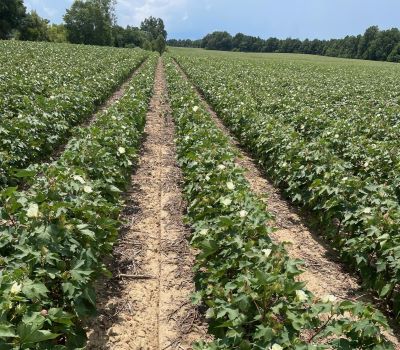 Dryland cotton (T. Miller)
Dryland cotton (T. Miller)
Insect pressure has picked up due to the irrigation greening the cotton up. We have had a terrible time with spider mites and have had to spray most of our cotton for them. Plant bugs have been steady, and we are holding our own at this time. The Bollgard III has held the bollworm up to this point .
The cotton has progressed rapidly with all the heat units we have received. I think we have some really good cotton, but the lack of rainfall has lowered my expectations from the potential we had a month ago.
Soybeans range from R6 to R4. Insect pressure has been very low. We are still irrigating. Corn is moving towards black layer, and we will be watering a lot for the last time next week.
Mark Nemec is an independent agricultural consultant for cotton, wheat, grain sorghum and corn in the Blacklands and Brazos River Bottom area of Central Texas.
Cotton in Central Texas has finally settled down. Some area dryland fields are reaching cutout, along with a few early planted irrigated fields. An unusual cool front came through last week, bringing scattered rain across the area. Anywhere from two tenths up to three inches fell in my area. A lot of irrigation motors got a much-needed break.
The forecast for this week (July 22) is for more rain and way below average temperatures. This should help take some heat stress off the plants, and off of us in the fields.
Stinkbugs are probably the biggest pest problem at the moment. Grain harvest has begun in the area, stirring things up. Spider mites have started to appear next to some grain fields as well and will need to be monitored. Depending on how much rain we get this week, there will probably be a need for some PGR applications, especially on some of the later planted cotton fields.
Kerry Siders is Texas A&M AgriLife Extension Agent-IPM for Hockley, Cochran, and Lamb Counties.
Cotton here on the Southern High Plains of Texas ranges from pinhead square to peak bloom (5 nodes above white flower [NAWF]). Ideally, we would like to be around 6-7 NAWF at this time. This allows us to take full advantage of an “effective bloom period” and have that last bloom set before odds decrease dramatically for full maturity. The last effective bloom date (high probability that a bloom will result in a harvestable boll) ranges from Aug. 7-20.
The adage “We make cotton in August” will hold true for this year.
Also, we are hopeful that more moderate temperatures are coming, not the +95-degree temperatures we have had. This will allow cotton to grow at a more normal pace rather than racing towards hard cutout. This will also allow rain and irrigation water to be more efficiently used.
Insect pests remain relatively few. Fleahoppers have had their time the past several weeks but will become less important as we move into August. We are keeping an eye out for Lygus and other plant bugs as well as cotton aphids. Beneficial insects and spiders have been present in most fields to help if needed.
My priorities for the next few weeks are:
- Keep up with crop water demands, we are nearing peak use in flowering cotton of 0.30” per day.
- Wrap-up fertilizer applications by the first of August, or at least before 5 NAWF. Late applications only delay maturity and can encourage cotton aphids.
- Keep a close watch out for cotton aphids, Lygus, stinkbugs, cotton bollworms, and even beet armyworms over the next month.
- Maintain our good square set going into flowering on late cotton and maintain a good boll set with limited damage and losses.
- Do not let cotton vegetative growth get out of hand. Our target of 5 NAWF should be reached around Aug. 5. This allows us to literally bloom out the top by the last effective bloom date of approximately Aug 20.







